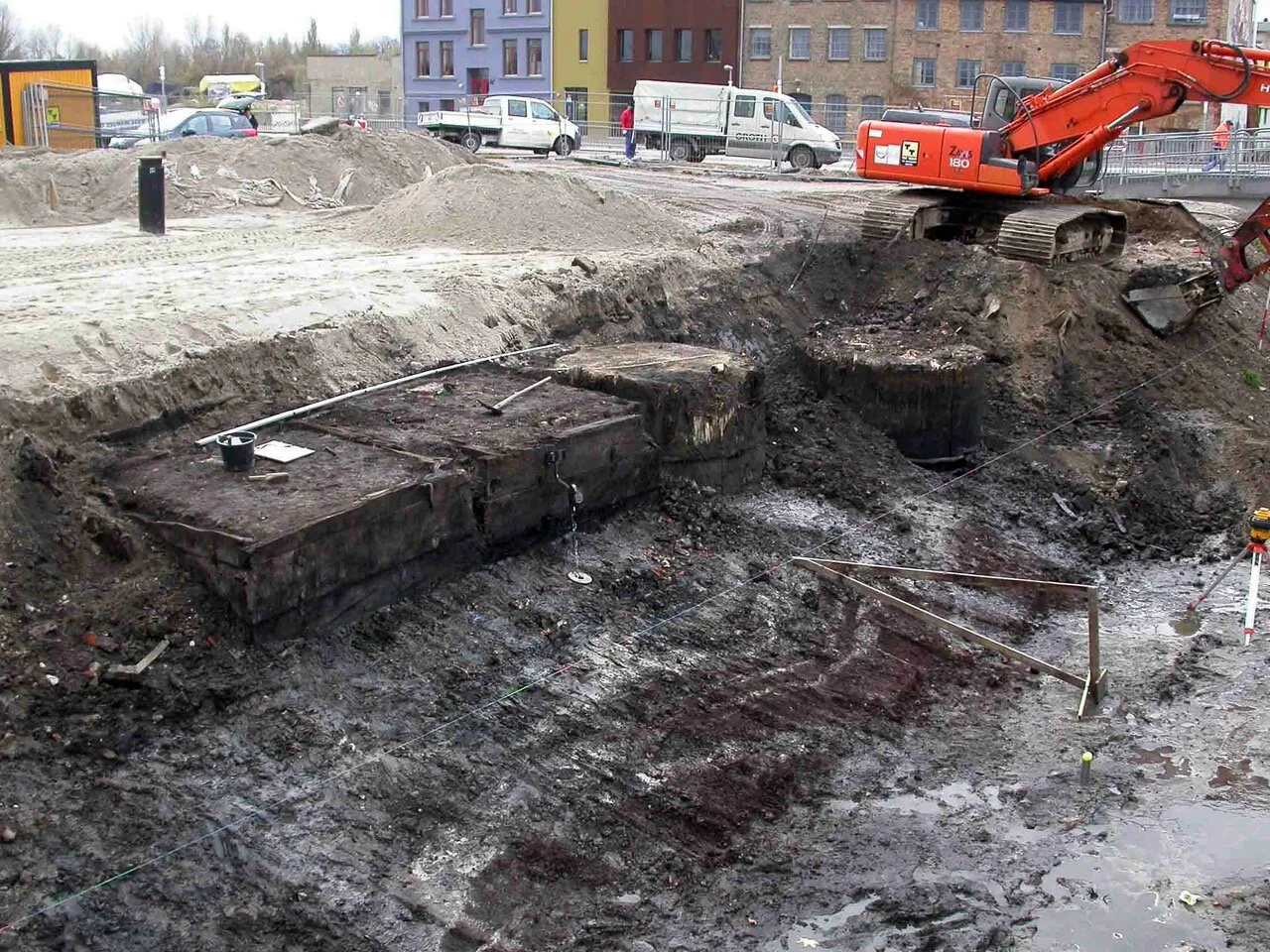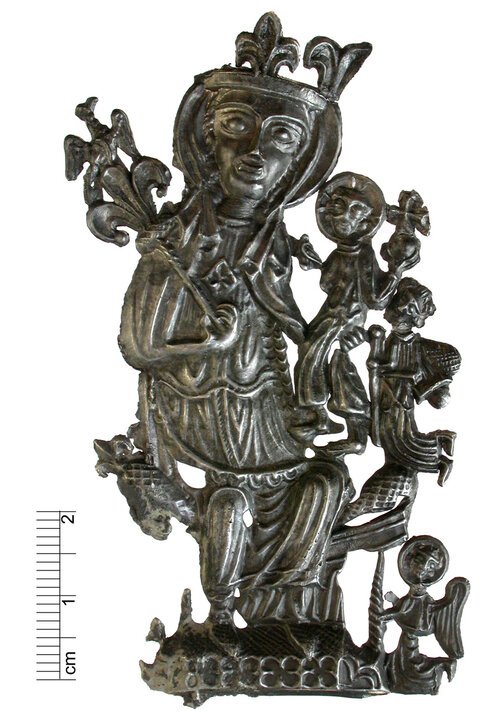GEOGRAPHY LESSON 4: Mobile, mutable images
The badges from Rostock and their corroborating evidence testify to the wide-ranging mobility of Rostock pilgrims. This fact should not surprise us; after all, the burghers of Rostock were sea-faring merchants and traders. The sum total of these artifacts suggests that piety wove together many strands of the lives of the inhabitants of medieval Rostock.
The bells in their churches sounded, as it were, with the voices of the saints and divine figures represented on their in-cast badges. Returned travelers must have told stories of miraculous rescues and journeys of thanksgiving, of long treks undertaken for the soul of a deceased or for the chance of inheritance, or of taking up arms to earn salvation by converting to Christianity the Prussian polytheists who lived only a few hundred kilometres to the east. The surviving evidence usually concerns men but here and there women and even children appear in it as well. Sometime around 1254-56, the archival evidence tells us, one Henricus de Horneshusen traveled to Livonia with his wife and son. The image below is a detail from the Saint Hedwig Altarpiece at Church of Saint Catherine in Brandenburg, which is located about 280 kilometres south of the city of Rostock. The Saint Hedwig Altarpiece, made around the year 1500, shows a man, a woman, and a child wearing hats adorned with pilgrim badges.
Selection from Saint Hedwig Altarpiece, Church of Saint Catherine, Brandenburg, Germany, ca. 1500. Photograph courtesy of photographer: Dirk Jacob.
The fact remains, however, that the archaeological evidence could suggest that medieval pilgrims threw their badges away at journey’s end. What might this tell us about the way medieval pilgrims viewed their religious badges?
Seeking to explain why so many pilgrim badges turn up in wet soil deposits in and along rivers (the Thames, the Seine, the Meuse, and so on), the idea circulated in and beyond medieval circles for decades that medieval pilgrims tossed their badges into rivers at journey’s end as a sign of thanksgiving. This “ritual deposition theory,” as art historian Jennifer Lee calls it, popular though it is, is not borne out by other evidence. There is good evidence that medieval badges were discarded as scrap metal, for example. Disposing of religious badges in latrines, whose contents in turn were flushed into rivers or used as backfill or infill on construction sites, further undermines the ritual deposition theory. It seems more likely that pilgrims at times treated religious badges as unimportant objects; when a badge’s purpose had been fulfilled, it was discarded.
A more promising theory that conforms better to the archaeological evidence is that religious badges were de-venerated, meaning that the badges lost their ritual-like, religious status as a hallowed or revered object and could therefore be discarded as waste. Perhaps, as Lee hypothesizes, religious badges “were more important as signs of a temporary social role (that of pilgrim) than as representatives of the object of the pilgrim’s devotion” (11). The discarded badges suggest that “many pilgrims did make a clear distinction between the venerable images at the pilgrim centres and the cheap, mass-produced copies that they bought to wear, and then to throw away” (Lee, 11). This theory is exciting because, as Lee points out, de-veneration is “a characteristically modern way to regard images” (10), which makes these medieval religious badges, thrown into latrines, the first tangible evidence of image de-veneration.
Does tossing a religious badge into a latrine make a medieval pilgrim less pious? Probably not. Rather, it shows us someone using images in ways that are, in fact, modern, “distinguish[ing] between different types of images with mutable and context-dependent significance” (Lee, 11). Meticulous attention to the medieval religious badges found in Rostock, Germany reveals that some of the practices of the Rostock city dwellers are arrestingly familiar, even when they are embedded in a historical era distant from our own.
Written by Dr. Ann Marie Rasmussen. This post was originally published on the Medieval Badges blog on March 22, 2021.
Works Cited
Ansorge, Jörg. “‘pelgrimmatze in de ere des almechteghen godes’: Pilgerzeichen und Schriftquellen zum mittelalterlichen Wallfahrtswesen in Rostock,” in Verknüpfungen des neuen Glaubens. Die Rostocker Reformationsgeschichte in ihren translokalen Bezügen, edited by Heinrich Holze and Kristen Skottki. Göttingen: Vandenhoeck-Ruprecht, 2019, pp. 29–83.
Lee, Jennifer. “Medieval pilgrims’ badges in rivers: the curious history of a non-theory.” Journal of Art Historiography. no. 11 (2014): pp. 1–11.











